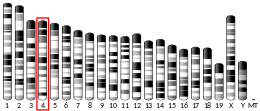PPAP2B
PPAP2B| PLPP3 | |||||||||||||||||||||||||
|---|---|---|---|---|---|---|---|---|---|---|---|---|---|---|---|---|---|---|---|---|---|---|---|---|---|
| 식별자 | |||||||||||||||||||||||||
| 에일리어스 | PLPP3, Dri42, LPP3, PAP2B, VCIP, PPAP2B, 인지질인산가수분해효소3 | ||||||||||||||||||||||||
| 외부 ID | OMIM : 607125 MGI : 1915166 HomoloGene : 15410 Gene Card : PLPP3 | ||||||||||||||||||||||||
| |||||||||||||||||||||||||
| |||||||||||||||||||||||||
| |||||||||||||||||||||||||
| |||||||||||||||||||||||||
| 맞춤법 | |||||||||||||||||||||||||
| 종. | 인간 | 마우스 | |||||||||||||||||||||||
| 엔트레즈 | |||||||||||||||||||||||||
| 앙상블 | |||||||||||||||||||||||||
| 유니프로트 | |||||||||||||||||||||||||
| RefSeq(mRNA) | |||||||||||||||||||||||||
| RefSeq(단백질) | |||||||||||||||||||||||||
| 장소(UCSC) | Chr 1: 56.49 ~56.65 Mb | Chr 4: 105.01 ~105.09 Mb | |||||||||||||||||||||||
| PubMed 검색 | [3] | [4] | |||||||||||||||||||||||
| 위키데이터 | |||||||||||||||||||||||||
| |||||||||||||||||||||||||
인지질인산인산가수분해효소3(LPP3) 및 인지질산인산가수분해효소2B(PAP-2b 또는 PPAP2B)로도 알려진 지질인산인산가수분해효소3(LPP3)는 염색체1의 PPAP2B 유전자에 의해 인체에서 암호화되는 효소이다.[5][6][7]그것은 많은 조직과 세포 [8]유형에서 보편적으로 발현된다.LPP3는 세포외 리소포스파티드산(LPA)과 단사슬 포스파티드산을 [9]가수분해하는 세포표면 당단백질이다.심혈관 질환, 암 등 다양한 인체 질환과 관련된 LPA 시그널링과 발육장애를 [10]억제함으로써 혈관과 태아의 발육을 조절할 수 있다.PPAP2B 유전자는 또한 관상동맥 [11]질환의 위험 증가와 관련된 27개의 위치 중 하나를 포함합니다.
구조.
진
PPAP2B 유전자는 1번 염색체 1p32.2에 위치하며 6개의 엑손이 포함되어 [6]있다.
단백질
LPP3는 PAP 관련 포스포에스테라아제 [7]계열의 구성원이다.이것은 혈장막에 국재하는 타입 2 활성 PAP이며, 알려진 4가지 LPP 동소 형태 중 하나이다.LPP3는 일체막단백질로서 6개의 소수성 트랜스막브레인 도메인과 3개의 보존 [12][13]도메인으로 이루어진 친수성 촉매 사이트를 포함한다.1개의 촉매 도메인은 기질을 결합하기 위해 제안되며, 다른 2개의 촉매 도메인은 기질의 탈인화에 기여한다.촉매 부위는 세포막에 위치할 때 전형적으로 세포외 기질을 향하고 세포내막에 위치할 때 내강을 향한다.이 단백질은 호모올리고머와 헤테로올리고머를 [13]형성할 수 있다.
기능.
이 단백질은 세포 혈장막에 국재하는 막 당단백질이다.세포외 리소포스파티드산(LPA)과 단사슬 포스파티드산을 능동적으로 가수분해하는 것으로 나타났다.[5] PPAP2B는 LPA 억제제로서 혈관 및 혈구의 활성화와 상피세포의 이동 및 [14][15]증식과 관련된 LPA 수용체 매개 세포 시그널링을 억제하는 것으로 알려져 있다.동적 아테롬 관련 흐름에 응답하여 PPAP2B는 LPA 시그널링 억제를 통해 항염증 표현형을 촉진하고 내피 단분자의 혈관 건전성을 유지할 수 있다.이 흐름에 민감한 PPAP2B 발현은 microRNA-92a에 의해 억제되고 전사 인자 KLF2에 [16]의해 활성화된다.LPA 수용체 매개 시그널링과 더불어 PPAP2B는 Wnt 시그널링과 관련지어 뼈, 심장 및 근육을 포함한 중요한 조직의 적절한 형성을 위한 배아 발달에 기능한다.PPAP2B가 전체적으로 결여된 생쥐의 축 복제 표현형은 Wnt 시그널링이 변경된 동물에서 관찰된 것과 유사하다.[17]또한 β-catenin을 통한 Wnt 시그널링 매개 TCF/LEF 전사는 PPAP2B 늘 배아줄기세포에서 업 레귤레이션되어 LPP3를 Wnt [18]경로의 네거티브 레귤레이터로 함축한다.
임상적 의의
혈관과 배아 발달에서 LPP3의 조절 역할 때문에, 이 단백질의 불활성화는 심혈관 질환과 발달 합병증의 원인이 될 수 있다.예를 들어 내피세포와 조혈세포 양쪽에서 LPP3의 유도 불활성화는 인간 [10][19]플라크에 LPA가 축적되어 아테롬성 동맥경화를 일으킨다.마찬가지로 혈장 LPA 수치는 급성 관상동맥증후군 [20]환자에서 유의하게 높아집니다.또한 내피 LPP3의 감소는 [16]혈관의 흐름 및 기계적 조절 장애와 관련이 있는 것으로 관찰되었다.생쥐에서 배아 발달 중에 LPP3의 비활성화는 부분적으로 태아외 혈관 [21]발달의 실패로 인해 조기 치사율을 초래한다.LPA 시그널링의 비정상적인 활성화는 암, 섬유화 장애 및 대사 증후군(인슐린 [22][23]저항성 포함)에도 관련되어 있다.
임상 마커
인간에서 PPAP2B는 게놈 전체 연관 연구(GWAS)[24][25]에 의해 관상동맥 질환과 관련된 13개의 새로운 위치 중 하나로 나타났다.이 예측은 높은 콜레스테롤 수치, 고혈압, 비만, 흡연, 당뇨병과 같은 심혈관 질환의 전통적인 위험 요소와는 무관한 것으로 보인다.
또한 PPAP2B 유전자를 포함한 27개 위치의 조합에 기초한 다중 위치 유전자 위험 점수 연구는 스타틴 치료의 향상된 임상 유익성뿐만 아니라 입사 및 재발 관상 동맥 질환 사건에 대한 위험이 증가한 개인을 식별했다.연구는 커뮤니티 코호트 연구(말모 다이어트 및 암 연구)와 1차 예방 코호트(JUPITER 및 ASCOT)와 2차 예방 코호트(CARE 및 PROFLE IT-TIMI 22)[11]의 4가지 추가 무작위 대조 시험을 기반으로 했다.
이러한 발견들은 또한 PPAP2B와 LPA가 [14]조기 예방을 위해 관상동맥질환을 예측하고 선별하는 역할을 할 수 있음을 시사한다.
상호 작용
인터랙티브 패스 맵
LPP3는 트리아실글리세리드 합성과 스핑고리피드 대사 경로 내의 상호작용에 관여한다.
레퍼런스
- ^ a b c GRCh38: 앙상블 릴리즈 89: ENSG00000162407 - 앙상블, 2017년 5월
- ^ a b c GRCm38: 앙상블 릴리즈 89: ENSMUSG000028517 - 앙상블, 2017년 5월
- ^ "Human PubMed Reference:". National Center for Biotechnology Information, U.S. National Library of Medicine.
- ^ "Mouse PubMed Reference:". National Center for Biotechnology Information, U.S. National Library of Medicine.
- ^ Kai M, Wada I, Imai Si, Sakane F, Kanoh H (September 1997). "Cloning and characterization of two human isozymes of Mg2+-independent phosphatidic acid phosphatase". The Journal of Biological Chemistry. 272 (39): 24572–8. doi:10.1074/jbc.272.39.24572. PMID 9305923.
- ^ a b "Entrez Gene: PPAP2B phosphatidic acid phosphatase type 2B".
- ^ a b "PLPP3 - Phospholipid phosphatase 3 - Homo sapiens (Human) - PLPP3 gene & protein". www.uniprot.org. Retrieved 2016-08-17.
- ^ "BioGPS - your Gene Portal System". biogps.org. Retrieved 2016-08-17.
- ^ Ishikawa T, Kai M, Wada I, Kanoh H (April 2000). "Cell surface activities of the human type 2b phosphatidic acid phosphatase". Journal of Biochemistry. 127 (4): 645–51. doi:10.1093/oxfordjournals.jbchem.a022652. PMID 10739957.
- ^ a b Yung YC, Stoddard NC, Chun J (July 2014). "LPA receptor signaling: pharmacology, physiology, and pathophysiology". Journal of Lipid Research. 55 (7): 1192–214. doi:10.1194/jlr.R046458. PMC 4076099. PMID 24643338.
- ^ a b Mega JL, Stitziel NO, Smith JG, Chasman DI, Caulfield MJ, Devlin JJ, Nordio F, Hyde CL, Cannon CP, Sacks FM, Poulter NR, Sever PS, Ridker PM, Braunwald E, Melander O, Kathiresan S, Sabatine MS (June 2015). "Genetic risk, coronary heart disease events, and the clinical benefit of statin therapy: an analysis of primary and secondary prevention trials". Lancet. 385 (9984): 2264–71. doi:10.1016/S0140-6736(14)61730-X. PMC 4608367. PMID 25748612.
- ^ Roberts R, Sciorra VA, Morris AJ (August 1998). "Human type 2 phosphatidic acid phosphohydrolases. Substrate specificity of the type 2a, 2b, and 2c enzymes and cell surface activity of the 2a isoform". The Journal of Biological Chemistry. 273 (34): 22059–67. doi:10.1074/jbc.273.34.22059. PMID 9705349.
- ^ a b Long JS, Pyne NJ, Pyne S (April 2008). "Lipid phosphate phosphatases form homo- and hetero-oligomers: catalytic competency, subcellular distribution and function" (PDF). The Biochemical Journal. 411 (2): 371–7. doi:10.1042/BJ20071607. PMID 18215144.
- ^ a b Ren H, Panchatcharam M, Mueller P, Escalante-Alcalde D, Morris AJ, Smyth SS (January 2013). "Lipid phosphate phosphatase (LPP3) and vascular development". Biochimica et Biophysica Acta (BBA) - Molecular and Cell Biology of Lipids. 1831 (1): 126–32. doi:10.1016/j.bbalip.2012.07.012. PMC 3683602. PMID 22835522.
- ^ English D, Kovala AT, Welch Z, Harvey KA, Siddiqui RA, Brindley DN, Garcia JG (December 1999). "Induction of endothelial cell chemotaxis by sphingosine 1-phosphate and stabilization of endothelial monolayer barrier function by lysophosphatidic acid, potential mediators of hematopoietic angiogenesis". Journal of Hematotherapy & Stem Cell Research. 8 (6): 627–34. doi:10.1089/152581699319795. PMID 10645770.
- ^ a b Wu C, Huang RT, Kuo CH, Kumar S, Kim CW, Lin YC, Chen YJ, Birukova A, Birukov KG, Dulin NO, Civelek M, Lusis AJ, Loyer X, Tedgui A, Dai G, Jo H, Fang Y (July 2015). "Mechanosensitive PPAP2B Regulates Endothelial Responses to Atherorelevant Hemodynamic Forces". Circulation Research. 117 (4): e41–53. doi:10.1161/CIRCRESAHA.117.306457. PMC 4522239. PMID 26034042.
- ^ Escalante-Alcalde D, Hernandez L, Le Stunff H, Maeda R, Lee HS, Sciorra VA, Daar I, Spiegel S, Morris AJ, Stewart CL (October 2003). "The lipid phosphatase LPP3 regulates extra-embryonic vasculogenesis and axis patterning". Development. 130 (19): 4623–37. doi:10.1242/dev.00635. PMID 12925589.
- ^ Arnold SJ, Stappert J, Bauer A, Kispert A, Herrmann BG, Kemler R (March 2000). "Brachyury is a target gene of the Wnt/beta-catenin signaling pathway". Mechanisms of Development. 91 (1–2): 249–58. doi:10.1016/s0925-4773(99)00309-3. PMID 10704849. S2CID 8394480.
- ^ Siess W, Zangl KJ, Essler M, Bauer M, Brandl R, Corrinth C, Bittman R, Tigyi G, Aepfelbacher M (June 1999). "Lysophosphatidic acid mediates the rapid activation of platelets and endothelial cells by mildly oxidized low density lipoprotein and accumulates in human atherosclerotic lesions". Proceedings of the National Academy of Sciences of the United States of America. 96 (12): 6931–6. doi:10.1073/pnas.96.12.6931. PMC 22019. PMID 10359816.
- ^ Kurano M, Suzuki A, Inoue A, Tokuhara Y, Kano K, Matsumoto H, Igarashi K, Ohkawa R, Nakamura K, Dohi T, Miyauchi K, Daida H, Tsukamoto K, Ikeda H, Aoki J, Yatomi Y (February 2015). "Possible involvement of minor lysophospholipids in the increase in plasma lysophosphatidic acid in acute coronary syndrome". Arteriosclerosis, Thrombosis, and Vascular Biology. 35 (2): 463–70. doi:10.1161/ATVBAHA.114.304748. PMID 25425621.
- ^ Escalante-Alcalde D, Hernandez L, Le Stunff H, Maeda R, Lee HS, Sciorra VA, Daar I, Spiegel S, Morris AJ, Stewart CL (October 2003). "The lipid phosphatase LPP3 regulates extra-embryonic vasculogenesis and axis patterning". Development. 130 (19): 4623–37. doi:10.1242/dev.00635. PMID 12925589.
- ^ Evans JF, Hutchinson JH (July 2010). "Seeing the future of bioactive lipid drug targets". Nature Chemical Biology. 6 (7): 476–9. doi:10.1038/nchembio.394. PMID 20559310.
- ^ Schober A, Siess W (October 2012). "Lysophosphatidic acid in atherosclerotic diseases". British Journal of Pharmacology. 167 (3): 465–82. doi:10.1111/j.1476-5381.2012.02021.x. PMC 3449253. PMID 22568609.
- ^ Schunkert H, König IR, Kathiresan S, Reilly MP, Assimes TL, Holm H, et al. (April 2011). "Large-scale association analysis identifies 13 new susceptibility loci for coronary artery disease". Nature Genetics. 43 (4): 333–8. doi:10.1038/ng.784. PMC 3119261. PMID 21378990.
- ^ Erbilgin A, Civelek M, Romanoski CE, Pan C, Hagopian R, Berliner JA, Lusis AJ (July 2013). "Identification of CAD candidate genes in GWAS loci and their expression in vascular cells". Journal of Lipid Research. 54 (7): 1894–905. doi:10.1194/jlr.M037085. PMC 3679391. PMID 23667179.
추가 정보
- Nanjundan M, Possmayer F (January 2003). "Pulmonary phosphatidic acid phosphatase and lipid phosphate phosphohydrolase". American Journal of Physiology. Lung Cellular and Molecular Physiology. 284 (1): L1–23. doi:10.1152/ajplung.00029.2002. PMID 12471011.
- Andersson B, Wentland MA, Ricafrente JY, Liu W, Gibbs RA (April 1996). "A "double adaptor" method for improved shotgun library construction". Analytical Biochemistry. 236 (1): 107–13. doi:10.1006/abio.1996.0138. PMID 8619474.
- Bonaldo MF, Lennon G, Soares MB (September 1996). "Normalization and subtraction: two approaches to facilitate gene discovery". Genome Research. 6 (9): 791–806. doi:10.1101/gr.6.9.791. PMID 8889548.
- Yu W, Andersson B, Worley KC, Muzny DM, Ding Y, Liu W, Ricafrente JY, Wentland MA, Lennon G, Gibbs RA (April 1997). "Large-scale concatenation cDNA sequencing". Genome Research. 7 (4): 353–8. doi:10.1101/gr.7.4.353. PMC 139146. PMID 9110174.
- Roberts R, Sciorra VA, Morris AJ (August 1998). "Human type 2 phosphatidic acid phosphohydrolases. Substrate specificity of the type 2a, 2b, and 2c enzymes and cell surface activity of the 2a isoform". The Journal of Biological Chemistry. 273 (34): 22059–67. doi:10.1074/jbc.273.34.22059. PMID 9705349.
- Sciorra VA, Morris AJ (November 1999). "Sequential actions of phospholipase D and phosphatidic acid phosphohydrolase 2b generate diglyceride in mammalian cells". Molecular Biology of the Cell. 10 (11): 3863–76. doi:10.1091/mbc.10.11.3863. PMC 25685. PMID 10564277.
- Ishikawa T, Kai M, Wada I, Kanoh H (April 2000). "Cell surface activities of the human type 2b phosphatidic acid phosphatase". Journal of Biochemistry. 127 (4): 645–51. doi:10.1093/oxfordjournals.jbchem.a022652. PMID 10739957.
- Humtsoe JO, Feng S, Thakker GD, Yang J, Hong J, Wary KK (April 2003). "Regulation of cell-cell interactions by phosphatidic acid phosphatase 2b/VCIP". The EMBO Journal. 22 (7): 1539–54. doi:10.1093/emboj/cdg165. PMC 152909. PMID 12660161.
- Burnett C, Howard K (August 2003). "Fly and mammalian lipid phosphate phosphatase isoforms differ in activity both in vitro and in vivo". EMBO Reports. 4 (8): 793–9. doi:10.1038/sj.embor.embor900. PMC 1326340. PMID 12856002.
- Burnett C, Makridou P, Hewlett L, Howard K (January 2004). "Lipid phosphate phosphatases dimerise, but this interaction is not required for in vivo activity". BMC Biochemistry. 5: 2. doi:10.1186/1471-2091-5-2. PMC 319698. PMID 14725715.
- Kai M, Sakane F, Jia YJ, Imai S, Yasuda S, Kanoh H (November 2006). "Lipid phosphate phosphatases 1 and 3 are localized in distinct lipid rafts". Journal of Biochemistry. 140 (5): 677–86. doi:10.1093/jb/mvj195. PMID 17005594.
- Mechtcheriakova D, Wlachos A, Sobanov J, Bornancin F, Zlabinger G, Baumruker T, Billich A (June 2007). "FTY720-phosphate is dephosphorylated by lipid phosphate phosphatase 3". FEBS Letters. 581 (16): 3063–8. doi:10.1016/j.febslet.2007.05.069. PMID 17555747.









